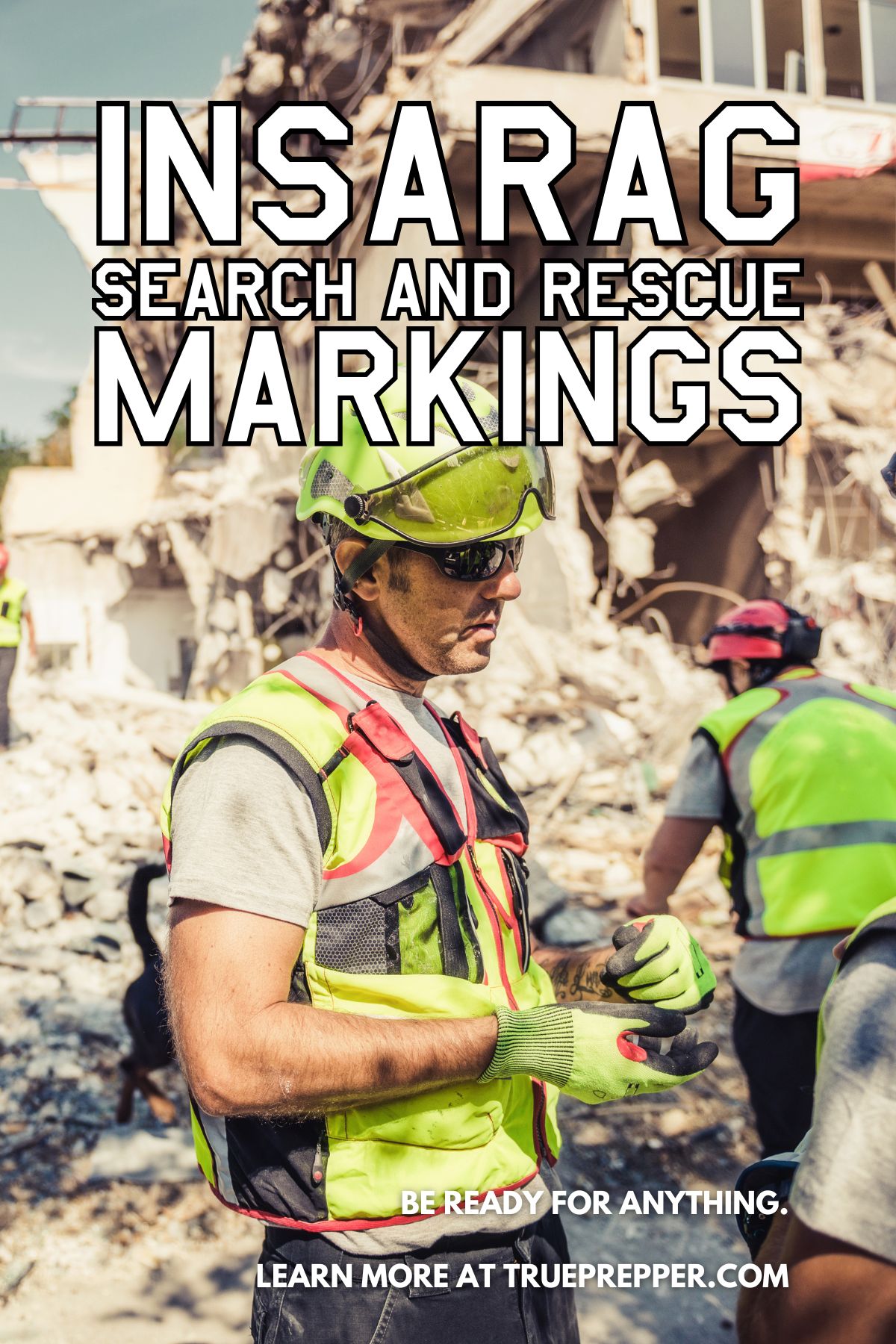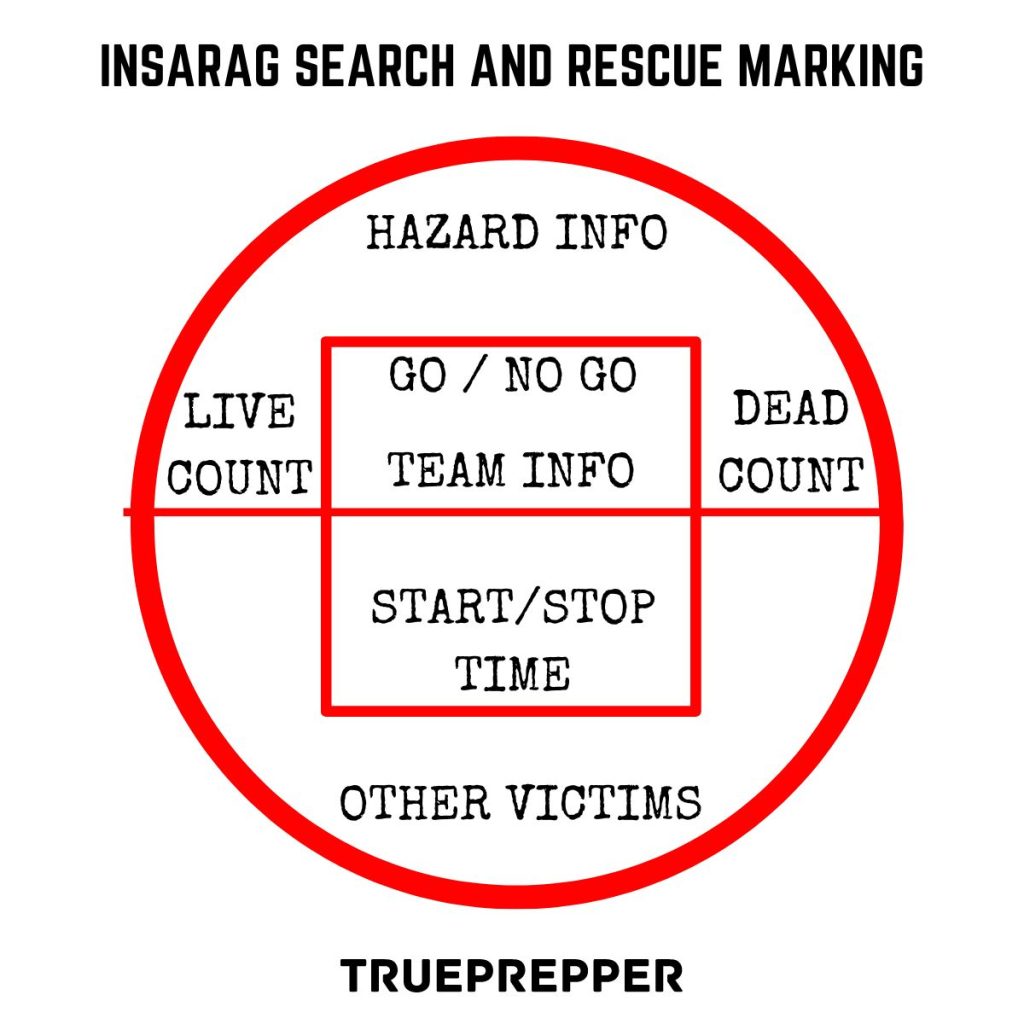
The International Search and Rescue Advisory Group (INSARAG) provides global guidance to standardize search and rescue procedures. While FEMA markings are relevant in the US, the INSARAG markings are the preferred choice for disaster response teams in other parts of the world.
Why Use INSARAG Urban Search and Rescue Markings?
During a disaster, it is essential to thoroughly and efficiently search homes and rescue people. Whether it is the military or a civilian organization, specific procedures are in place to ensure an effective search process.
One of the most effective ways to achieve this is by using markings on the homes being searched. These markings provide important information to other responders, such as the safety of a building, the time of search, the search team responsible, and the number of victims found.
Instructions for Using INSARAG Markings
- Create a 1-meter square box (roughly 3′ by 3′) near the front door or entry point using spray paint to initiate an INSARAG marking.
- If the building is safe to enter, mark “GO” inside the box. Otherwise, mark “NO GO”.
- Write the team name and start time inside the box.
- Write the finish time of the inspection inside the box.
- Place hazard information above the box and any known missing persons below the box.
- Indicate live victims removed to the left of the box and dead victims to the right.
- Once the search and inspection are complete, encircle all the information.
- When the team is certain there are no more victims, draw a horizontal line through the circle and box.
Significance of INSARAG Markings for Preppers
By understanding the meaning behind these markings, individuals can determine if an area has been searched and the specific number of people and victims evacuated. It is even possible to identify the search team involved and the time taken for the search. In extreme situations, individuals can also choose to use these markings on their own homes.
Using the appropriate search and rescue marking based on the circumstances can help individuals avoid unwanted encounters and “hide in plain sight.” Making a house appear as if it has already been searched and cleared, or is too dangerous to enter, can deter military encounters or forceful evacuations without confrontation.
However, it is not advisable to put a search and rescue tag at your front door if you require help or assistance.

Choosing the Right Search and Rescue Marking
There are two types of search and rescue markings: FEMA markings used in the US, and INSARAG markings used in the rest of the NATO nations. It is crucial to be familiar with both marking systems. If you live in or travel to a country with a different system, understanding the meaning of their markings is important. In some cases, foreign forces or search and rescue squads may continue using their conventional markings in a foreign country.
Conclusion
Knowledge is a powerful tool during challenging times, and the ability to avoid conflict and confrontation is invaluable. While the FEMA Urban Search and Rescue Markings may be more applicable in the US, the INSARAG marking system can still be useful, even for US residents.
For more informative guides, check out the following:
- Go Away Green: Disney’s Camouflage Paint
- Survival Caches and Resource Dispersal
- Home Survival Kit Guide, Gear List, and Checklist
Continue exploring, stay prepared, and prioritize your safety.
—————————————————————————————————————————————————————————————–
By: Rusty Collins
Title: Understanding INSARAG Search and Rescue Markings
Sourced From: www.trueprepper.com/insarag-search-rescue-markings-know/
Published Date: Thu, 18 Jan 2024 11:46:25 +0000

